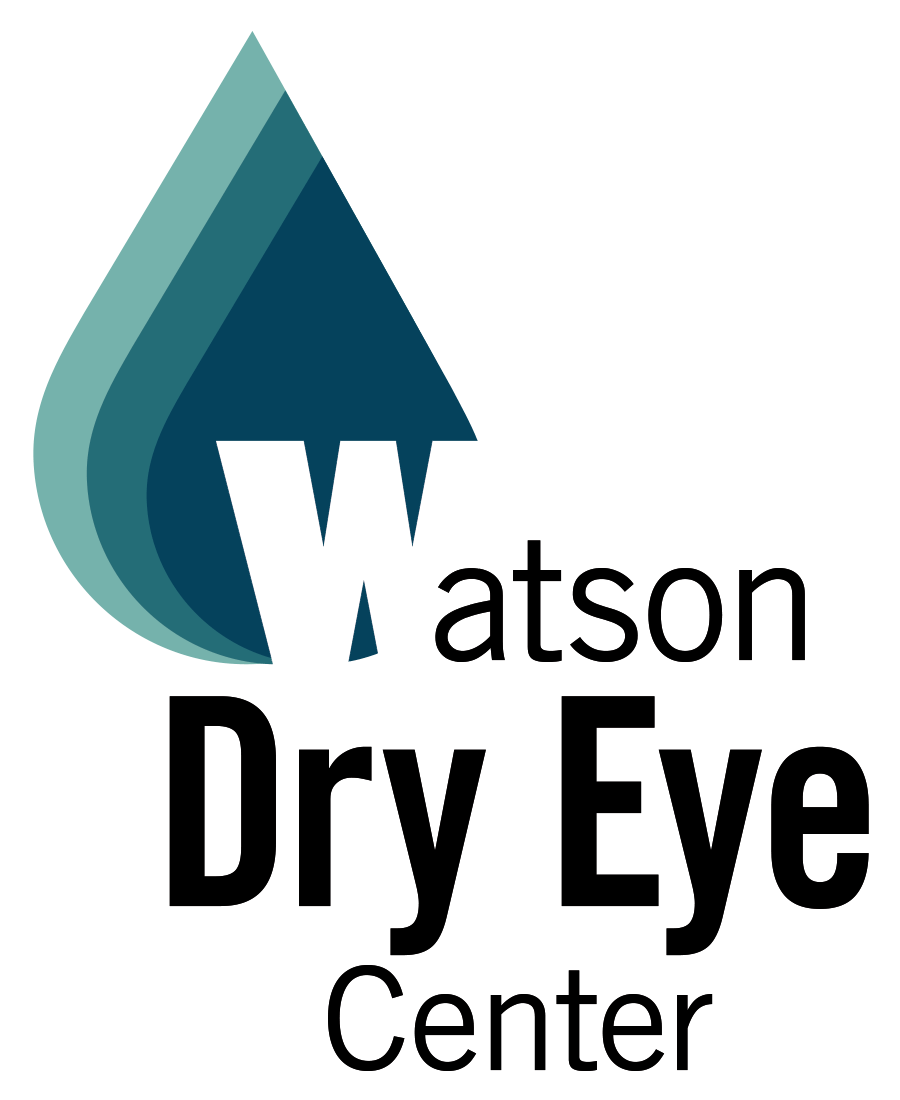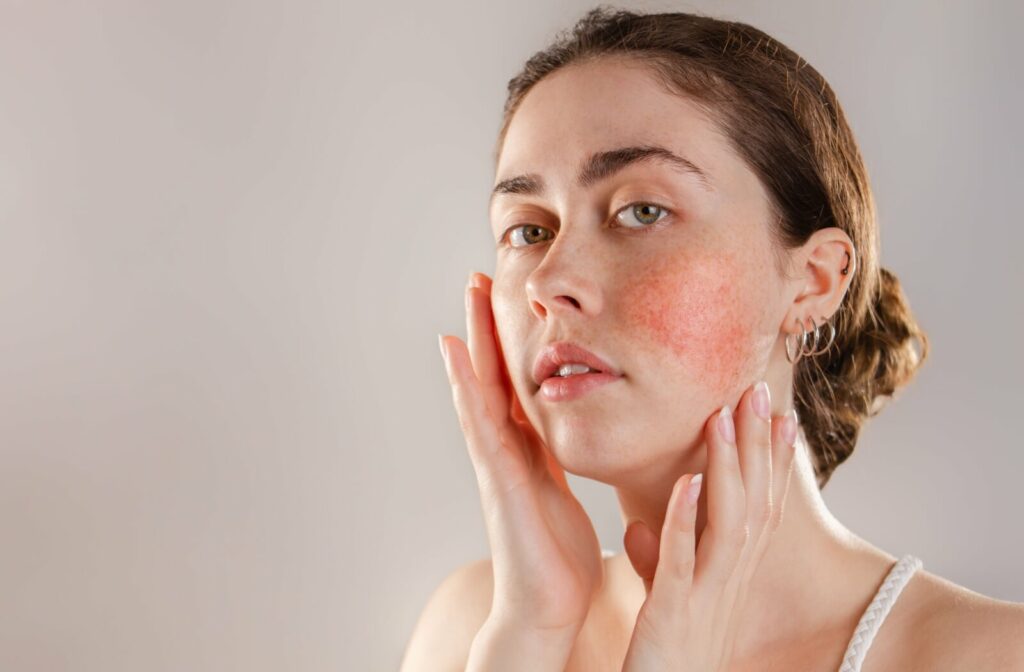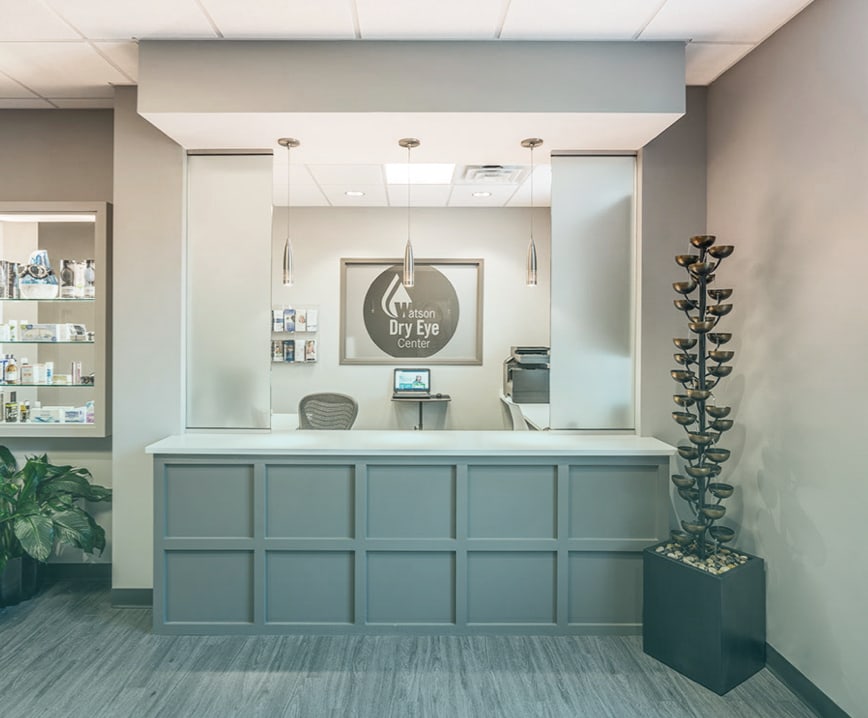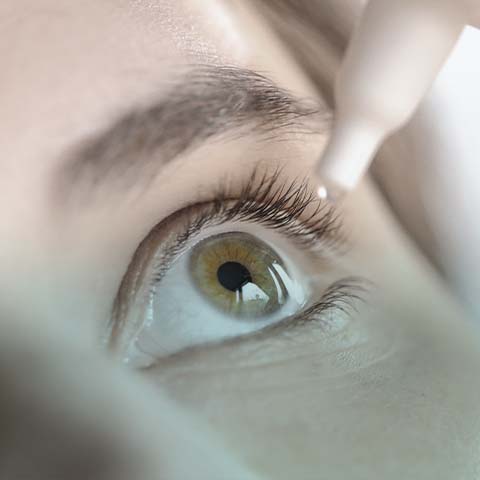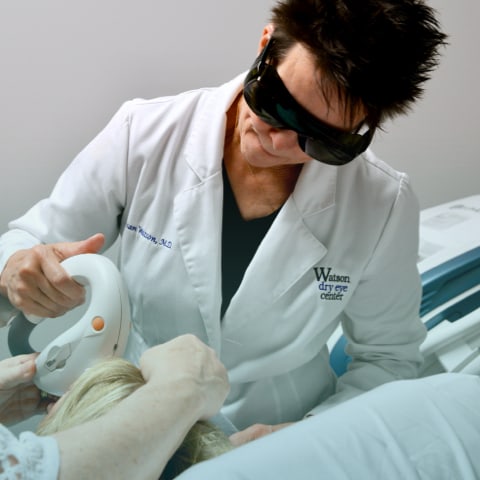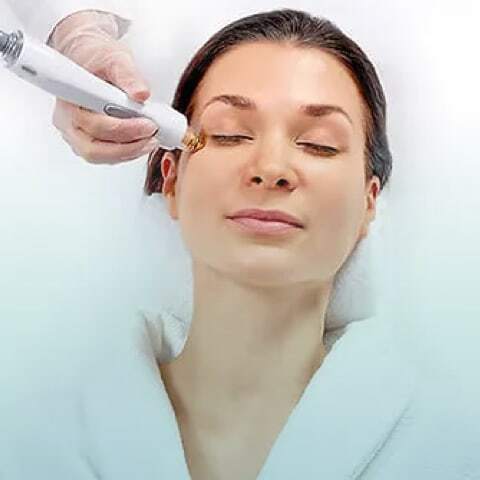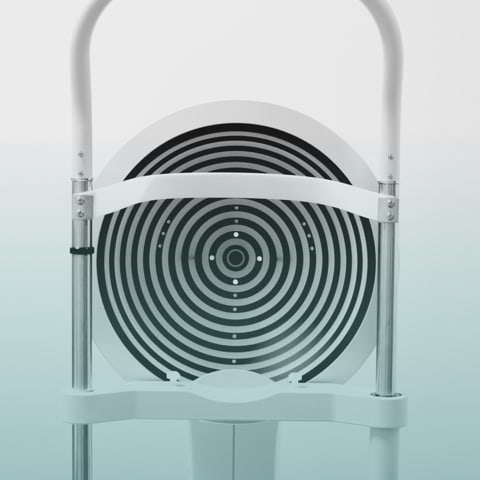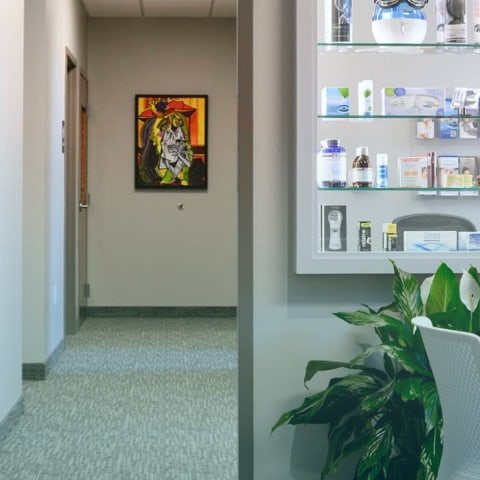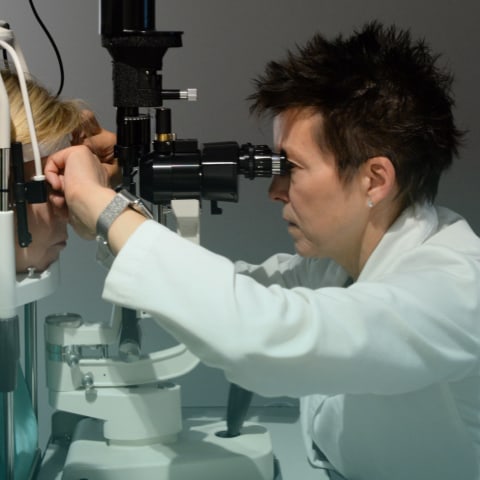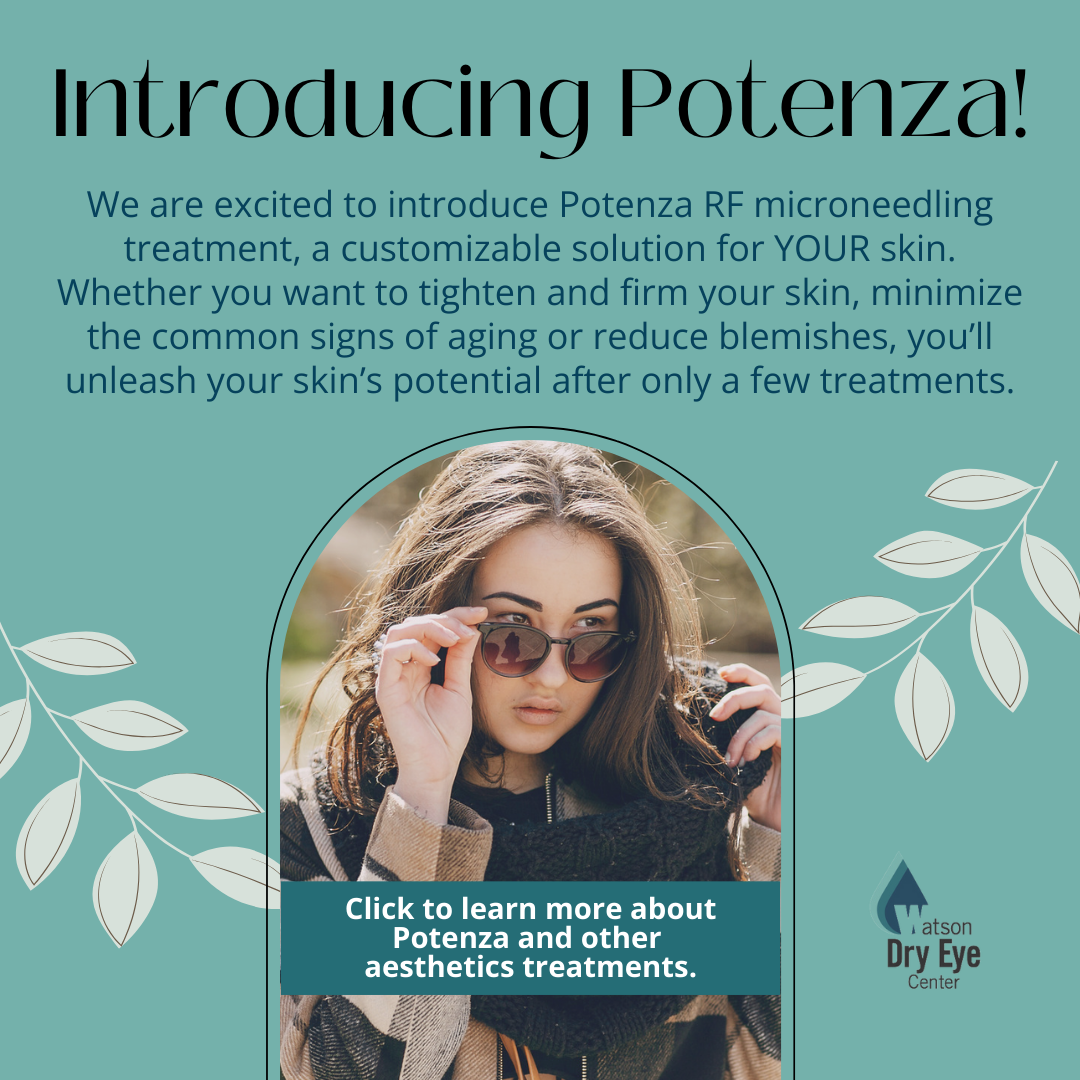No—rosacea is not classified as an autoimmune disease. While it involves inflammation, rosacea doesn’t stem from the immune system attacking the body’s own tissues. It’s considered a chronic inflammatory condition with both genetic and environmental triggers.
Understanding this distinction is important for managing symptoms effectively—especially when rosacea affects more than just your skin.
What Is Rosacea?
Rosacea is a skin disorder that primarily affects the face. It causes chronic inflammation, leading to symptoms like redness, flushing, visible blood vessels, and bumps that may resemble acne. In more advanced cases, skin may thicken or swell, especially around the nose.
Triggers vary from person to person but may include:
- Sun exposure
- Spicy foods
- Hot drinks
- Alcohol
- Emotional stress
- Changes in temperature
- Certain skincare products
Although it’s mainly considered a dermatological condition, rosacea can also affect the eyes.
Does Rosacea Cause Dry Eyes?
Yes, especially in a subtype called ocular rosacea. This form impacts the eyes and eyelids, often causing dry, irritated, or watery eyes.
People with ocular rosacea may experience:
- Burning or stinging
- Redness
- Grittiness or a sandy sensation
- Light sensitivity
- Blurred vision
- Swollen eyelids
Inflammation linked to rosacea can disrupt the function of the meibomian glands, which produce the oil layer in tears. When these glands are blocked or inflamed, it can lead to dry eye syndrome.
How to Prevent Dry Eyes When You Have Rosacea
Managing rosacea on its own can be challenging, but when it also affects the eyes, care needs to be more intentional. Addressing both skin and eye symptoms together is key—not only because they can worsen each other, but also because they often stem from the same underlying inflammation.
Daily habits play a major role in preventing dry eye flare-ups. Using preservative-free artificial tears can help keep the eyes hydrated, especially during periods of irritation. It’s also important to take breaks from screens throughout the day to reduce digital eye strain. Sunglasses offer protection from wind, sunlight, and environmental irritants that can trigger both rosacea and dryness.
Staying well hydrated supports overall tear production, and resisting the urge to rub your eyes can help reduce irritation.
Identifying and avoiding personal rosacea triggers—like spicy foods, alcohol, or temperature extremes—can help minimize symptom severity. If symptoms persist or worsen, an eye care provider can recommend targeted treatments for both dry eye and ocular rosacea.
Other Medical Conditions that Cause Dry Eyes
Dry eye isn’t always linked to rosacea. Several medical conditions, especially autoimmune diseases, can lead to chronic dryness by affecting moisture-producing glands.
These include:
- Sjögren’s syndrome
- Rheumatoid arthritis
- Lupus
- Thyroid disorders
Sjögren’s syndrome, for example, targets tear and saliva glands and is often associated with dry eyes and dry mouth. These conditions differ from ocular rosacea in that they are systemic, not localized, and may require different treatment approaches.
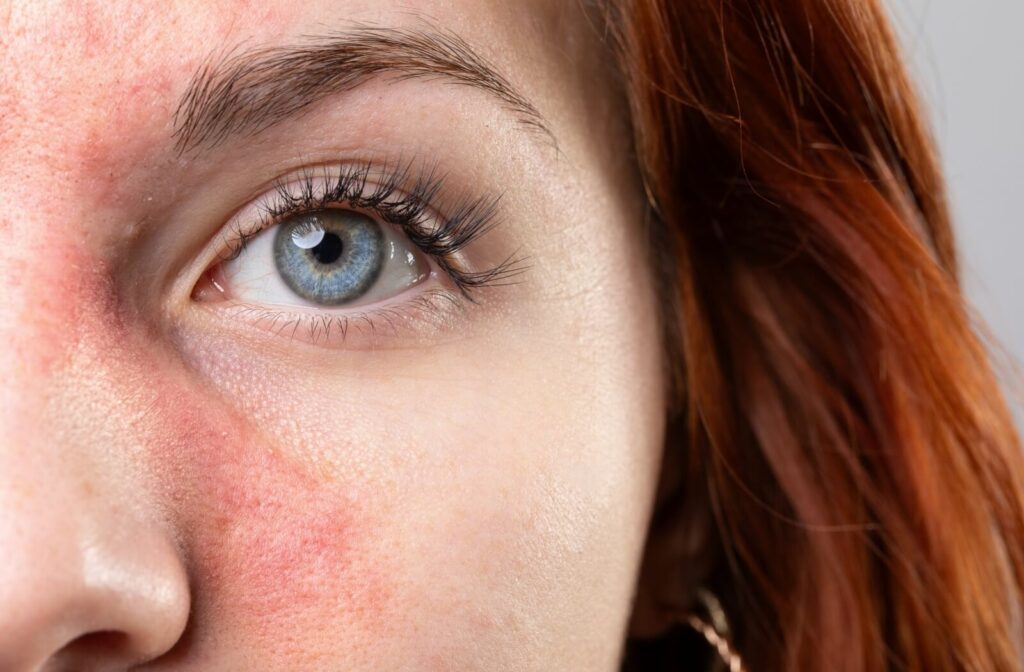
Other Common Causes of Dry Eyes
Environmental and lifestyle factors can also contribute to dry eye symptoms—even without an underlying disease.
Dry eyes aren’t always linked to a medical condition—often, they result from everyday environmental or lifestyle factors. Spending long hours in front of digital screens can reduce blink rate and disrupt tear stability, leading to irritation and discomfort.
Contact lens use may also contribute to dryness, especially when worn for extended periods. Environmental factors like dry indoor heat, air conditioning, or exposure to wind and dust can strip moisture from the eyes. In addition, hormonal changes—particularly during menopause—can alter tear production.
As we age, our natural ability to produce tears gradually decreases, making dry eye symptoms more common over time. Identifying the right cause helps guide more effective treatment. For some individuals, simple lifestyle changes can offer noticeable relief.
How to Manage Chronic Dry Eyes
Dry eye management often requires a combination of in-office treatments and at-home care.
Options may include:
- Artificial tears or prescription eye drops
- OptiLight IPL therapy to reduce inflammation
- LipiFlow, a thermal pulsation treatment to clear oil glands
- TempSure Envi, a radiofrequency procedure that supports healthy tear production
- BlephEx, an eyelid cleaning system that removes debris and bacteria
Routine eye exams allow providers to monitor symptoms and adjust care as needed.
How Watson Dry Eye Center Can Help
Rosacea and dry eyes often occur together, and understanding their connection can lead to more effective treatment. If you’re experiencing ongoing eye irritation, dryness, or discomfort along with facial redness or flare-ups, ocular rosacea may be the reason.
Rather than managing each issue separately, a thorough eye exam can help identify whether inflammation from rosacea is contributing to your symptoms. From there, a personalized treatment plan can be developed to relieve discomfort and support long-term eye health.
Schedule a consultation to learn how Watson Dry Eye Center supports patients with ocular rosacea and chronic dry eye using evidence-based, personalized treatment.
